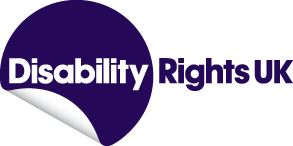DR UK says ESA cut will not be offset by other measures
In the last few weeks the House of Lords twice voted against the government’s plan to cut ESA for people in the Work Related Activity Group from 2017. But twice the House of Commons has not budged. The Government’s plan remains.
This is terrible news for disabled people. A 28% cut in income (for new claimants from 2017) is intolerable - especially when disabled people so often live in deep poverty; and, as the eloquent speeches from peers and the powerful evidence from hundreds of thousands of disabled people showed, it will do nothing to incentivise employment – quite the opposite.
We are given ‘reassurance’ that more disabled people will get work, and raise their income that way. But will they? We hope of course that the forthcoming White Paper will bring:
- real incentives to employers - for instance to take on far more disabled people as apprentices, with decent career prospects
- greater requirements on employers, like using their supply chains to drive good employment practice, and large employers reporting transparently on their disability employment rates
- a serious expansion of peer support, offered by disabled people’s organisations
- far more personalised support for people living with disability and health conditions, and tailored advice for employers when they need it
- a total overhaul of the discredited WCA and removal of the culture of fear.
Even if all this happened – and it’s a big if – there would still be people who had no job – just less income. On average people stay in the WRAG group for 2 years. 2 years with 28% less income is devastating.
And for those who may be able to work with the right support and employer actions – we need to consider the backdrop of reduced resources.
A recent report by Reform finds that employment support spending is set to be cut by about 80%. They write:
‘The Government’s main welfare-to-work support programme, the Work Programme, has been funded by around £500-£600 million each year …..From April 2017, the Work Programme, along with Work Choice, a voluntary employment programme for disabled people costing around £80 million a year, will be merged into a new Health and Work Programme. This will cater for claimants with health conditions or disabilities and those who have been unemployed for over two years, with estimated funding of just £130 million a year. This represents a cut in the main components of employment support spend of around 80 per cent’ (Reform 2016 Working Welfare: a radically new approach to disability and sickness benefit).'
The risk that we are clearly facing is that from 2017, many disabled people will just be worse off – when already disabled people are so disproportionately affected by poverty.
At DR UK we will work strenuously to support disabled people to get decent careers (not just jobs) and to know the benefits they remain entitled to; and will speak out constantly on the impact of benefit cuts.
But this cut is drastic and without justification. It doesn’t even make sense from the point of view of government policy. A decade ago there was cross-party concern that people were being put into 2 totally separate groups – ‘can’ work or ‘can’t’ work. But real life isn’t like that. 2.6 million people were in the ‘can’t’ work group (on incapacity benefit) and policy makers wanted to change that – by creating a middle category, of people who might be able to work, but not immediately and only with good support. If the rate of ESA is reduced to the rate of JSA, in effect that middle category is gone – we are back to ‘can work’ and ‘can’t work’. In 10 years’ time I predict people will be asking how on earth policy makers allowed so many people to be seen as ‘can’t work’ again - ie policy will have gone round in a complete circle.
The government is profoundly wrong to make this harsh and counter-productive cut.
